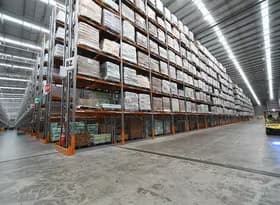
Rocky data foundations?
Aggregates are important. But how important is clouded by a lack of quality data being collected. Based on current production figures and survey response rates, the actual amount of aggregates produced over the last 12 years might be 49% higher than reported.
A rock-solid foundation
Aggregates – rock, stone, sand, and gravel – are key inputs to roading, infrastructure, construction, and reclamation and protection across New Zealand.
Data released late last year showed that 32.6 million tonnes of aggregate was produced in the 2023 calendar year – up nearly 18% from the 2022 year. Most of this total was rock, sand, and gravel for roading, with 19.26 million tonnes produced, up 22% from a year ago. A lot was also produced for building (as part of fill, site preparations, and a lot more), at 12.5 million tonnes, up 9%.
Sand for industry was small, at 0.48 million tonnes in 2023, up 73%pa, and rock for reclamation and protection was even smaller, at 0.35 million tonnes in 2023, but 150% higher than the total reported in 2022.
Despite some large increases, digging beneath the figures shows that it’s not clear if New Zealand produced more aggregate, or if more people just reported what they did in 2023.
A large freight task, and 5% of total infrastructure costs
Aggregates are heavy – clearly – and as a result are often sourced close to where they will be used. But they still make up a considerable amount of New Zealand’s freight task. Aggregates were estimated to contribute 15% of total freight volumes nationally in 2018, according to the National Freight Demand Study.
Infometrics analysis for Fulton Hogan in 2023 (released as part of a Hearing on the RMA and a local District Plan proposal) highlighted that aggregates make up around 5% of total heavy and civil engineering construction input costs (essentially infrastructure costs), and were 18% of materials costs alone.
But reporting only voluntary
Aggregates are important to the economy, and it’s also important then to know what’s happening to the production of aggregates. Data like this helps inform investment decisions, and analysis of how much economic activity and infrastructure has been undertaken. But the data is only as good as how it is collected and reported.
New Zealand Petroleum & Minerals (NZP&M), part of the Ministry of Business, Innovation & Employment, runs the annual survey and publishes the results. The survey goes out to aggregates producers and quarry operators that NZP&M knows about, including organisations that have a Crown minerals permits plus private operators. Importantly, “the survey is not a statutory requirement and responses are voluntary.”
For example, in the latest survey for the 2023 calendar year, 464 of 742 quarries surveyed provided a response – a 62.5% response rate. A “response” includes all responses NZP&M received, including quarries reporting zero production, or that the quarry refused to provide production data.
Just a 70% response rate, but as low as 38% recently
Annual aggregates data is available from 1993 onwards, except for in 1997 when there was no data reported. Survey responses have only been available since 2012 onwards – it’s not clear if the survey was mandatory before then, or more likely, that response rates weren’t recorded. Over the 12 years of data available, the average response rate is 70% and has fluctuated between a high of 84% in 2015, to a low of just under 38% in 2022 (see Chart 1).
The last three years have been particularly poor, as Chart 1 shows, with a response rate of around 51%.
Over the 12 years between 2011 and 2023, 350.52 million tonnes of aggregate production had been recorded. But trying to correct for the survey undercount suggests that total production could be closer to 522.14 million tonnes – an extra 171.62 million tonnes, or 49% larger than the current voluntary survey results suggest.
The more we know, the better informed we can be
Knowing how much we produce, of just about anything, is an important baseline metric. It means we know how much we might need for future projects, so it can be sourced at the right time and at a reasonable cost, as well as monitoring the resources we’re using, and how to plan for that extractive use.
The more we know, the better informed we can be about what we might need in the future. On the flipside, the less we know, the greater chance there is that we don’t adequately plan for tomorrow, and find ourselves short, or in an expensive position.
In exchange for pulling rocks and stones out of the ground, it seems only fair that the quantities of this extraction are reported, so we have an idea of what resources we’re using, and for what.



















